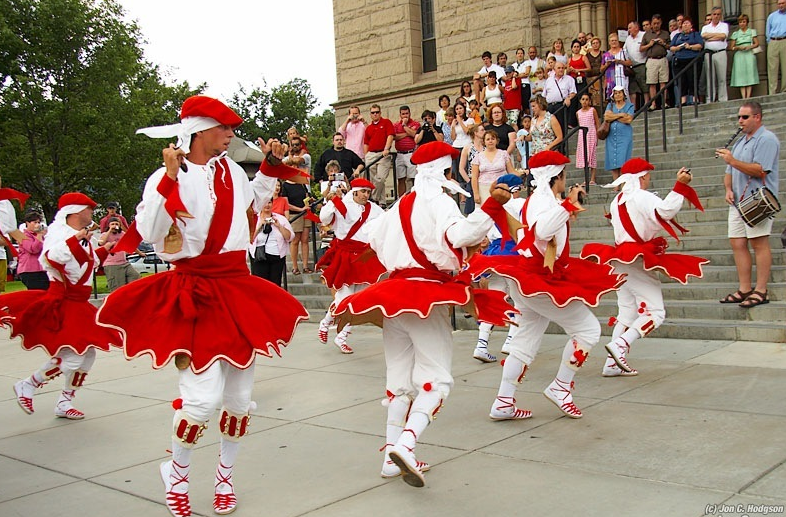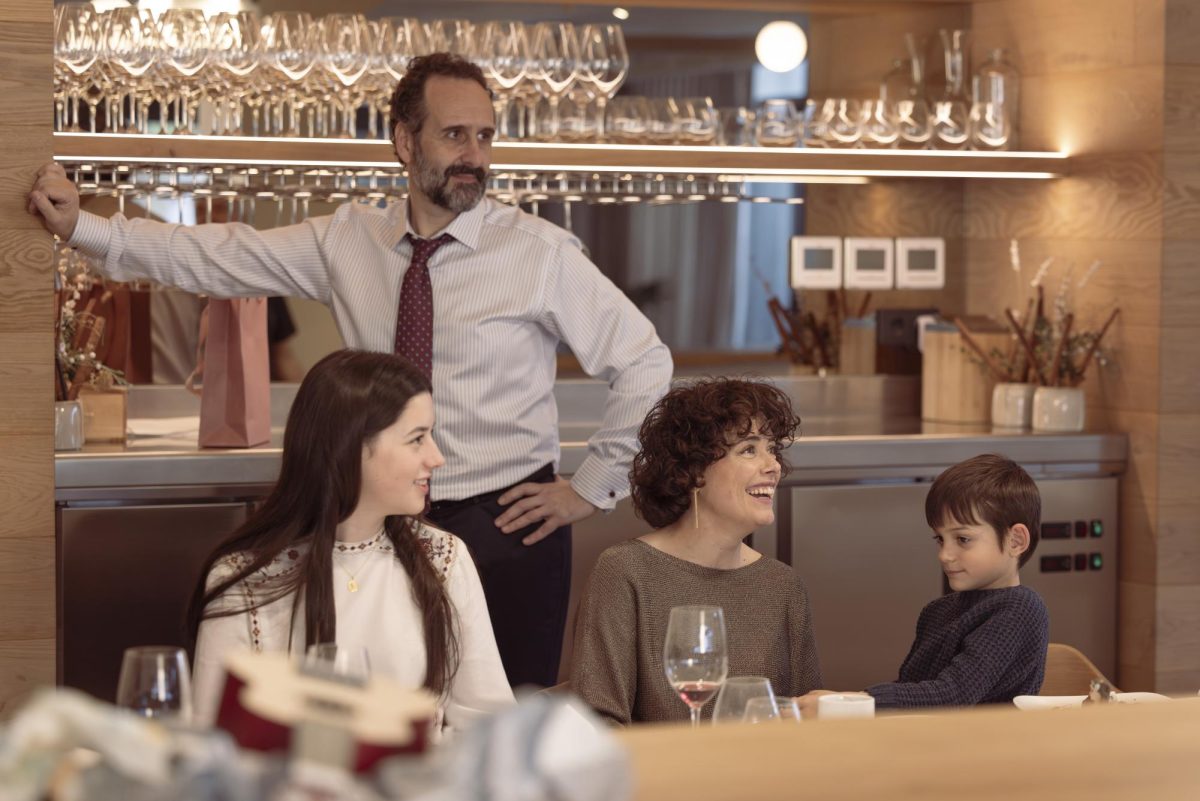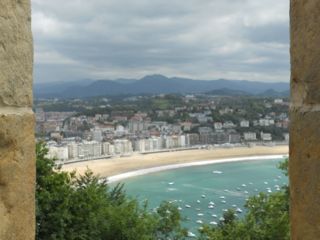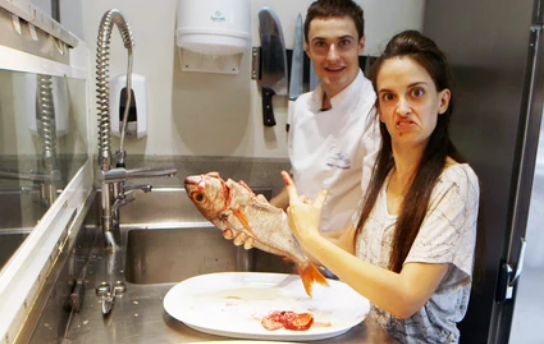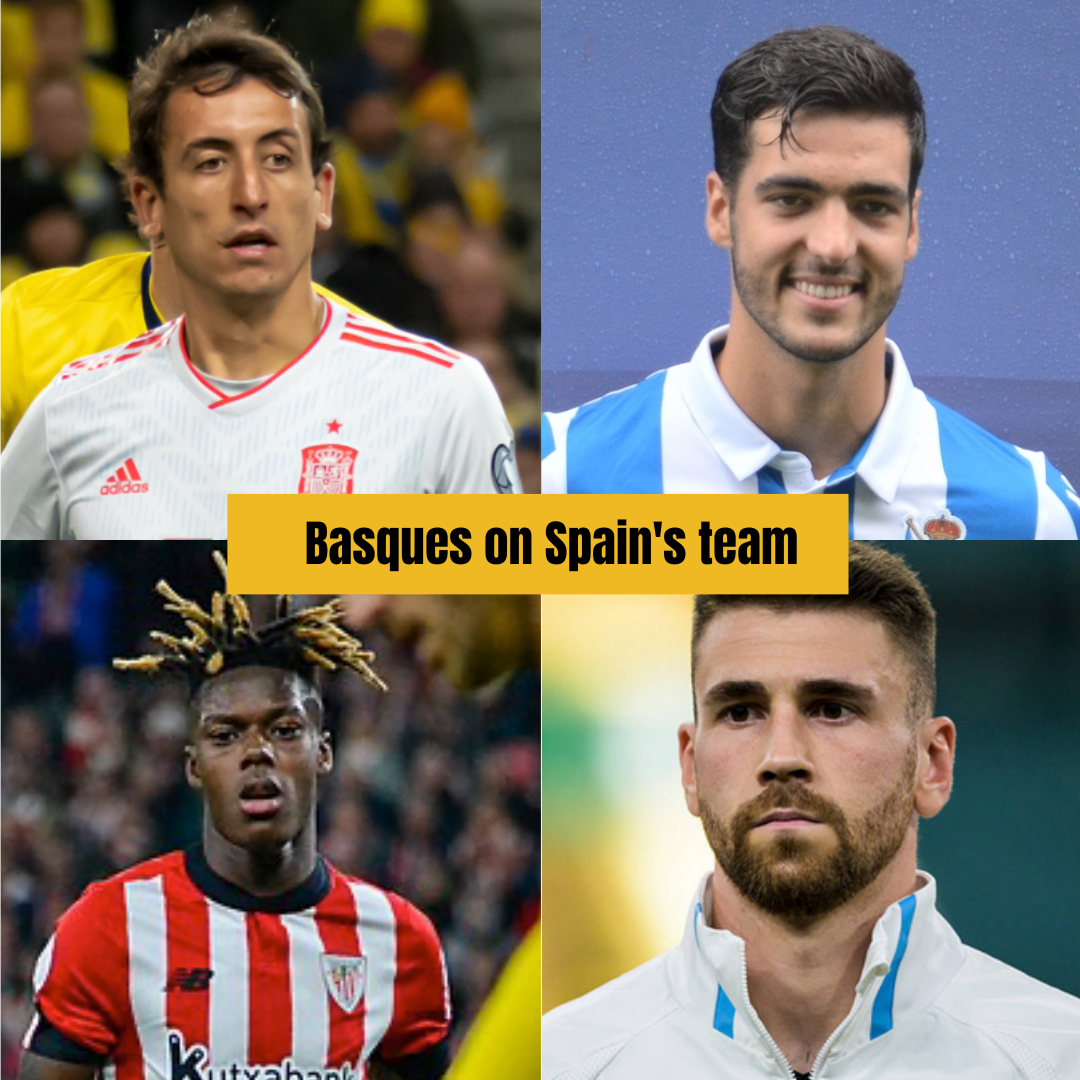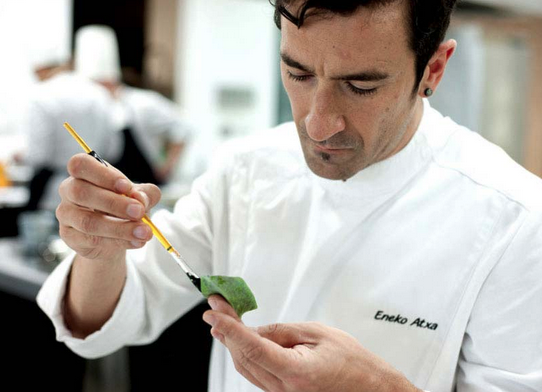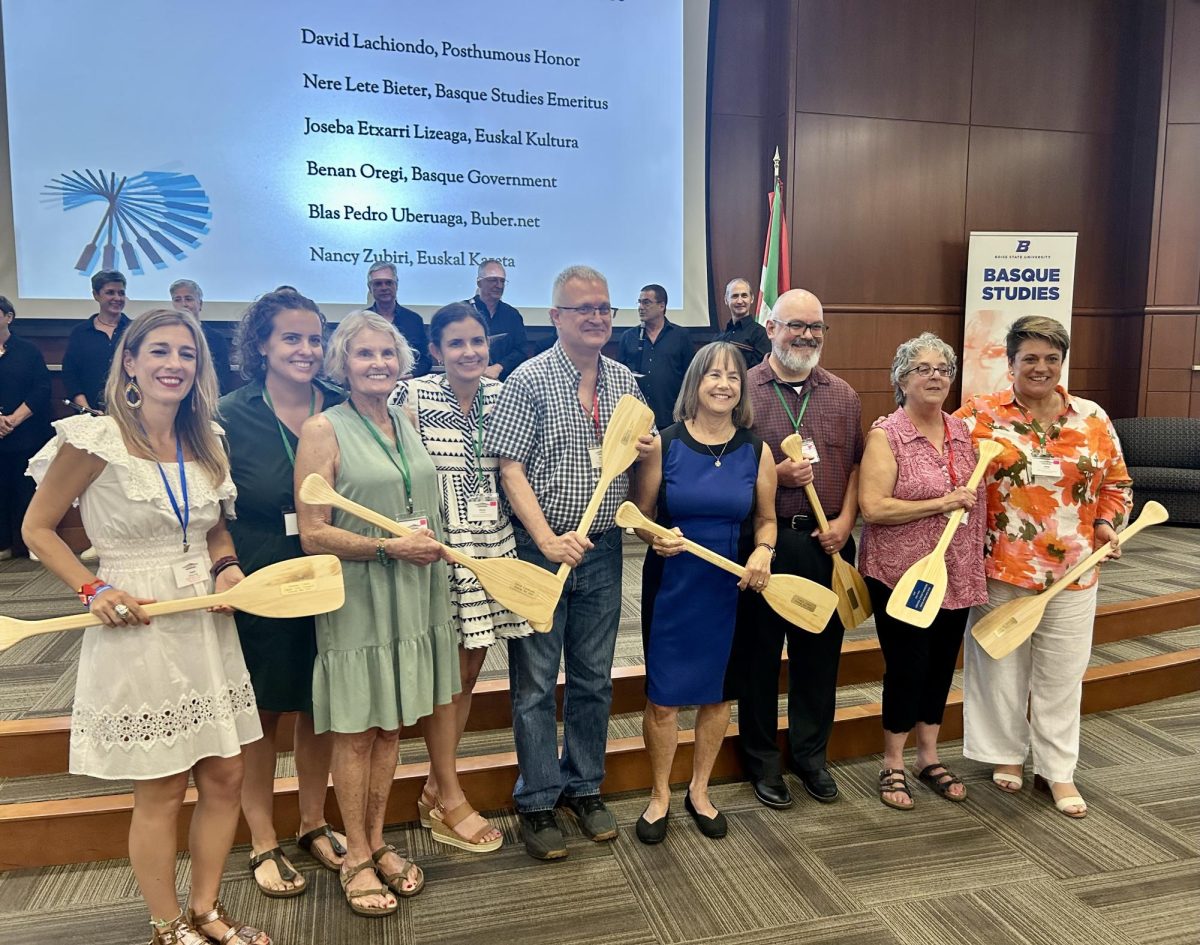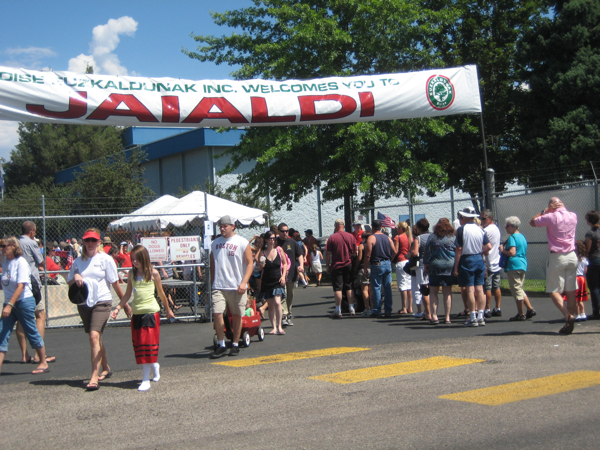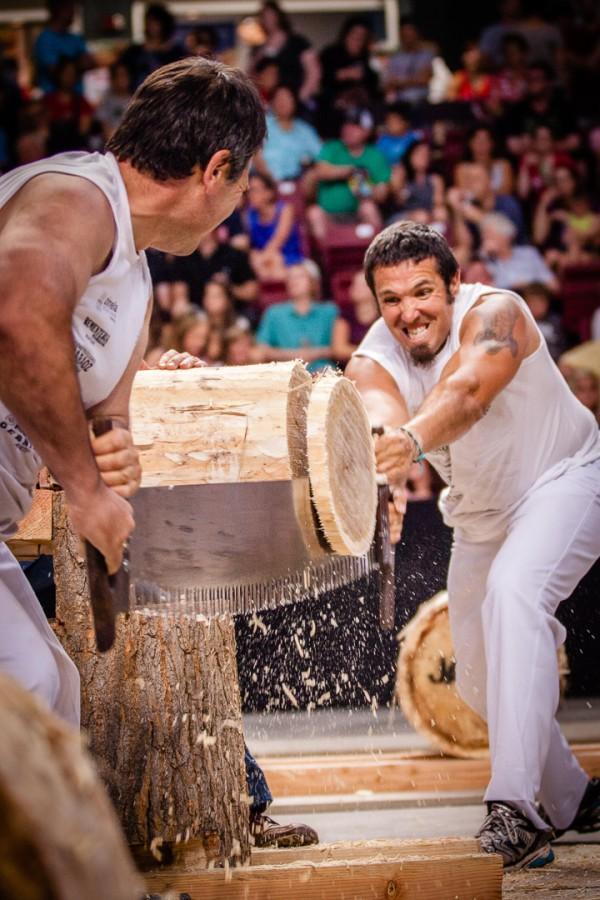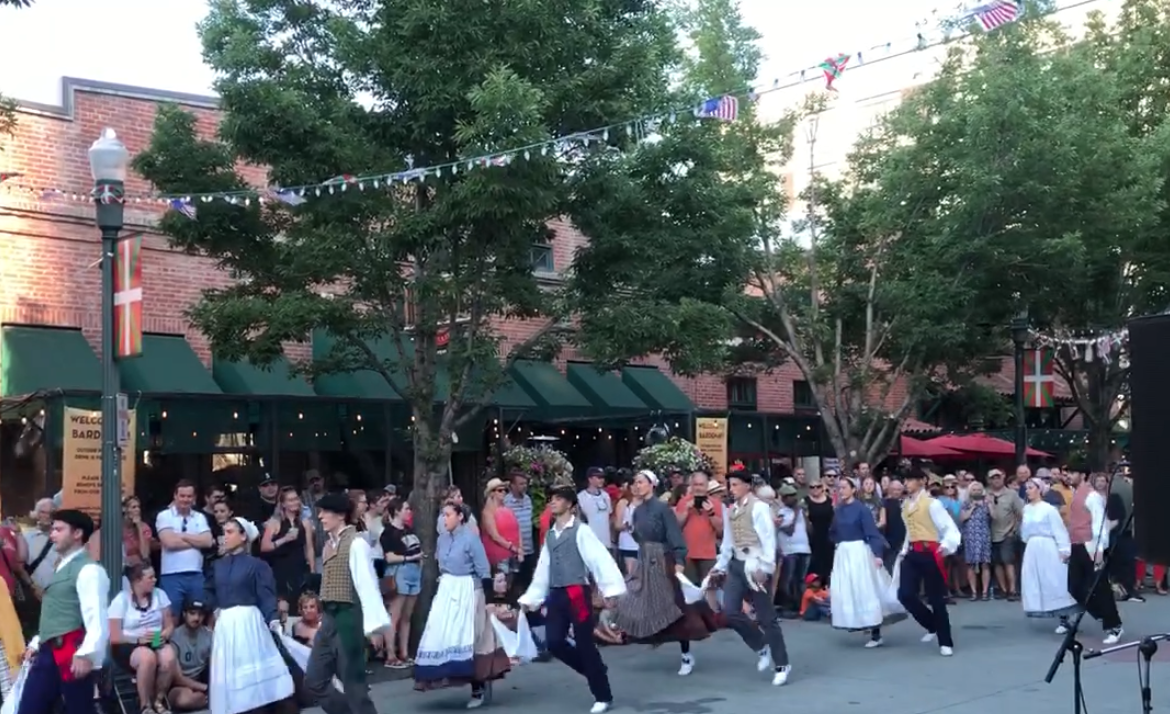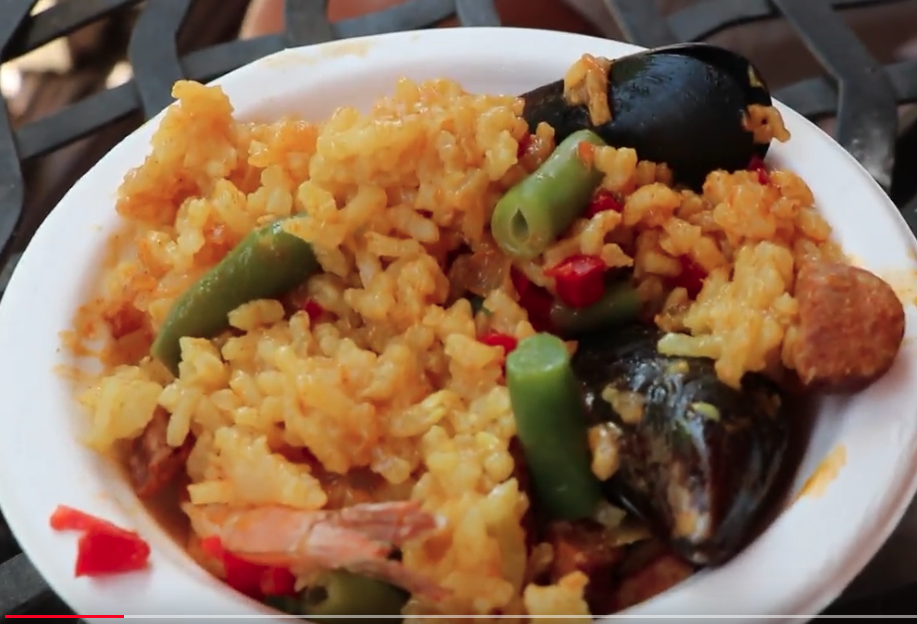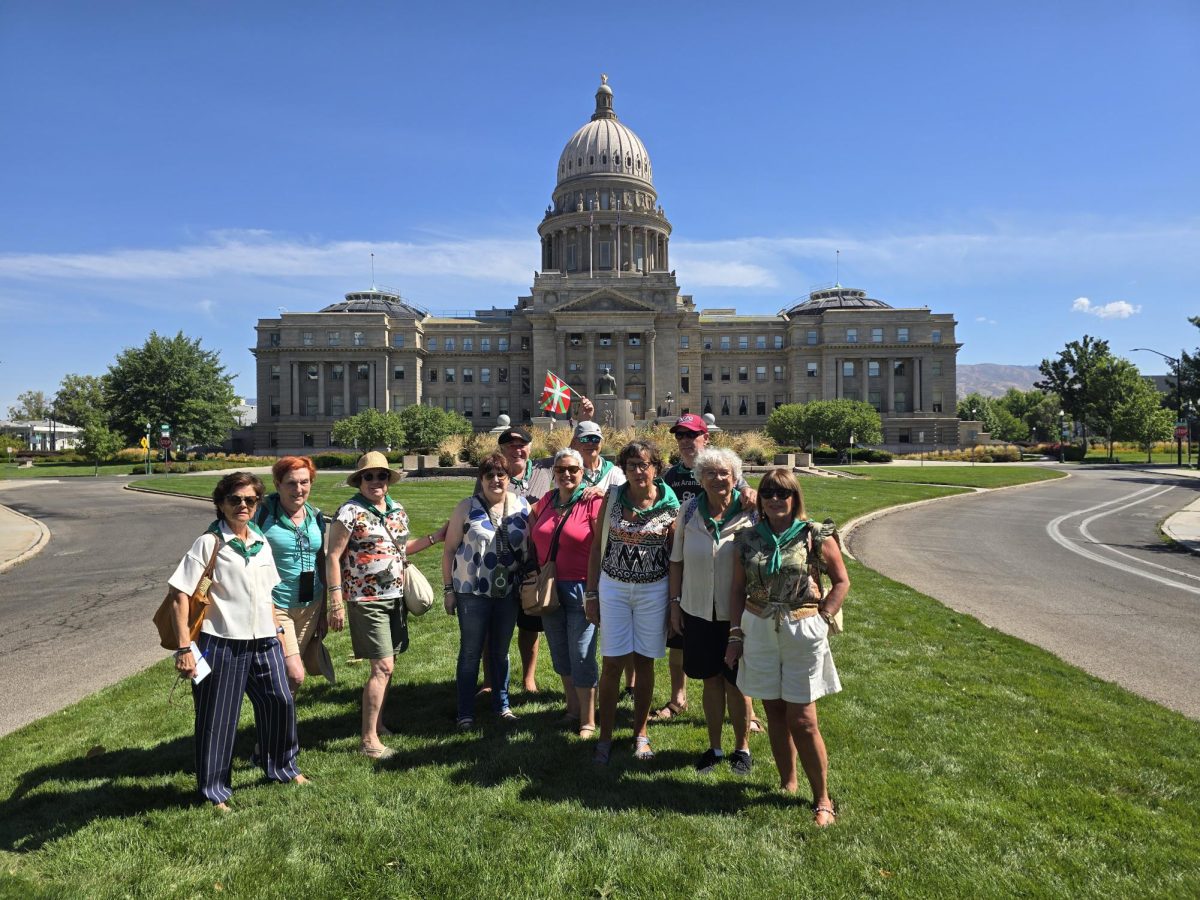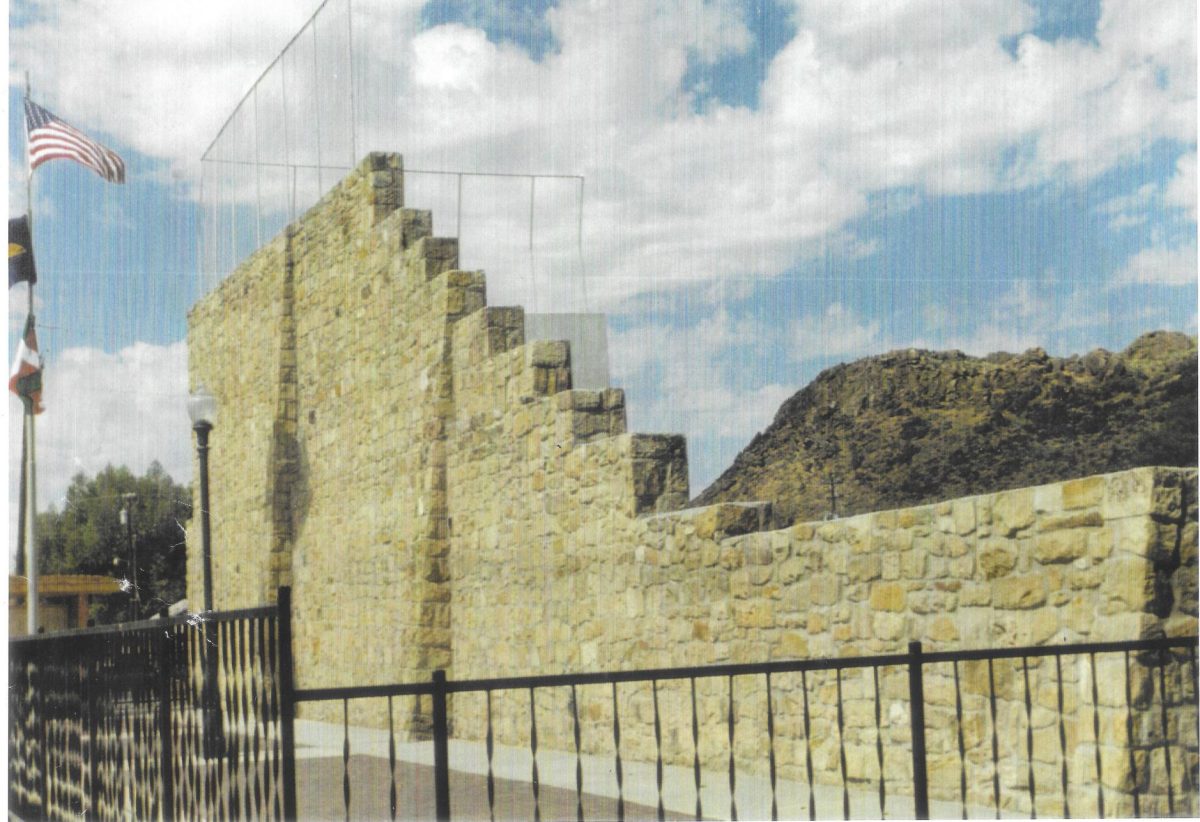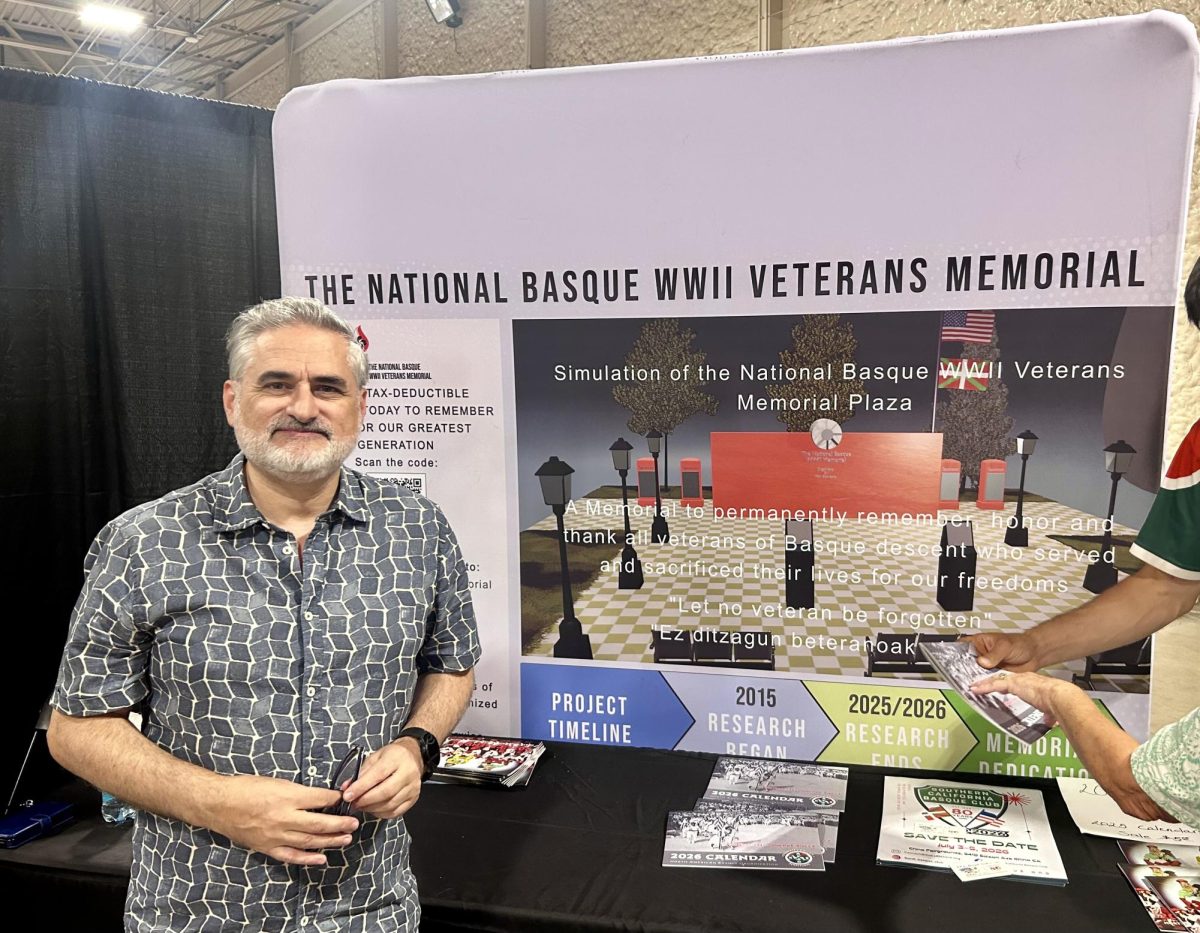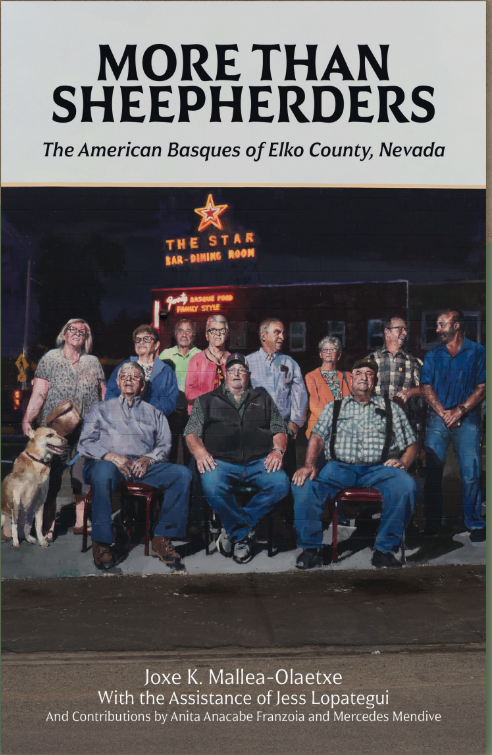There will be no shortage of sights to see and things to do at Jaialdi 2025. The massive typically once-every-five-years Basque festival in Boise, Idaho hasn’t happened in ten years due to the 2020 pandemic. Among the many attractions is an exhibit on Boise State University’s Basque Studies Abroad program in Oñati, Gipuzkoa. The exhibit is currently at Boise State’s two-day Symposium and will be on display at the Basque Center on Grove Street.
The Oñati program was honored on July 29 by Idaho Gov. Brad Little, who issued a proclamation at the state Capitol. The rotunda was filled with people, some of them graduates of the program, as well as members of the Basque American community and officials from the Basque government who were in Boise for the Jaialdi celebrations. Gov. Little acknowledged the cultural impact of the groundbreaking program and the importance of the state’s Basque American community. The Oñati program served as a model for university study-abroad programs.
The Oñati exhibit first opened in October 2024 at the Basque Museum and Cultural Center in Boise, Idaho. The museum celebrated the 50th anniversary of the ground-breaking Basque Studies Abroad program. Over a dozen alumni of the program gathered for a reunion lunch at the Basque Museum and presented a panel to reminisce about the program and its meaning to them.
The Oñati program anniversary is now being honored at the Zortziak Bat Symposium (July 30-31) and the exhibit will move to the Basque Center (601 W. Grove St.)
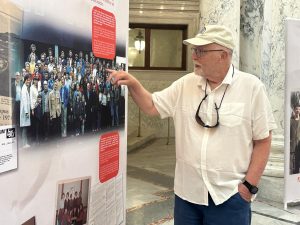
The History of the Program
The Oñati Exchange Program began in 1974 at the former Boise State College, which gained University status earlier that same year. The study abroad program saw some 80 students and over a dozen staff embark on a ten month trip to the Basque town of Oñati (“Oñate” in Spanish) in the province of Gipuzkoa.
In its first year, the program attracted broad interest from Basques and non-Basques alike. Anita Anacabe Franzoia, a Basque-American native of Elko, Nevada, was a participant in the program’s first year in 1974 and ‘75.
The daughter of Basque immigrants from the province of Bizkaia, Franzoia is fluent in both Basque and Spanish, which very much came in handy for her. Although Oñati is in the province of Gipuzkoa, the Basque spoken there is the Bizkaian dialect, so as she puts it, “I was in seventh heaven.”
Being a native Basque and Spanish speaker as well as having visited the Basque Country with her mother two years prior allowed her to become a leader of sorts among the group, and she jokes that she “led them astray.”
The Oñati exchange program also caught the attention of some non-Basques. Such students included Tim Wilcomb, a Boise native who himself is not Basque but whose aunt was. After plans to take a gap year and travel to Ecuador with a friend fell through, he was approached by family friend Dr. John Barnes, then the president of Boise State, who informed the Wilcombs about the program a week and a half before it began. Wilcomb decided to go. He said he believes he was the last participant to sign up for the program that year.
The program began at a precarious time for the Basque Country, as the ailing Spanish dictator Francisco Franco still clung to power and the Basque terrorist group ETA was becoming more active in the region. Wilcomb recalls that dozens of Guardia Civil officers were stationed in Oñati upon his arrival, a cuartel (“barracks” in Spanish) having been built there shortly before. Franzoia recalls that a bomb had exploded in the town shortly before their arrival, raising concerns. Bomb explosions were not uncommon and someone was shot “almost weekly in the region,” says Wilcomb. Because of this uncertainty, Wilcomb says that the exchange students encountered some initial suspicion from the residents of Oñati, but after a few months, they had won over the locals’ trust.
Wilcomb remembers one heartfelt moment when he witnessed old Basque women in tears upon seeing the group perform Basque dances in traditional attire for the first time in 40 years due to Franco’s decades-long suppression of Basque culture in Spain.
Wilcomb says that his learning on the trip was more experiential than academic. The experiences that stuck with him the most were the times he spent downtown conversing with the locals.
Wilcomb also did not confine his year abroad to Oñati. When he could, he took trips all over Spain and to other countries in Europe as well. He was such a vagabond that he mailed two term papers from Switzerland and Scotland during the program.
The Oñati program had a lasting impact on Wilcomb, who has been back to the Basque Country many times since 1975. In his own words, “It changed my perspective of the world” and helped him to understand different cultures. In fact, both of Wilcomb’s sons ended up going on the same program themselves years later. The program had a similar effect on Franzoia, whose non-Basque husband and all four of their children have been on the same program.
Many of the Basque-American participants whose families had come to America during the 1920s and 30s had become disconnected from their heritage and relatives in the Basque Country, but were able to rekindle that connection and renew their pride in their Basque roots on the trip.
The Teachers
A pivotal figure in starting the Oñati program was Dr. Pat Bieter, a prominent Boise educator and later an elected official who was instrumental in getting the program up and running. Bieter, a non-Basque who married Basque-American Boise native Eloise Garmendia, became fascinated with the Basque culture and, together with his wife, took their five children to participate in the year-long program.
Participants also fondly remembered several other faculty members who went on the trip. One was Professor Jon Oñatibia, a native of Gipuzkoa who fled the Basque Country during the Spanish Civil War and went on to teach Basque music, dance, and language at BSU. Wilcomb described Oñatibia as “a Basque treasure” who taught him how to play the txistu, the traditional Basque flute. Having played the French horn for nine years prior to Oñati, Wilcomb helped to make learning the three-holed txistu with Oñatibia a fulfilling part of the program.
In a tragic twist of fate, the Bieters and Oñatibia passed away in separate car accidents, Oñatabia in his hometown of Oiartzun in 1979 and the Bieters near Banks, Idaho in 1999.
A third notable faculty member on the trip was Professor Jon Bilbao, known for his major contributions to the field of Basque studies which included Eusko Bibliographia, a bibliography of Basque works, and Amerikanuak, which he published with Professor William Douglass in 1975.
Like Oñatibia, Bilbao was also a refugee who fled the Spanish Civil War. One can only imagine how poignant it must have been for both of them to return to their homeland during the final year of the rule of Franco, because of whom they had to flee almost 40 years before.
The ceremony at the Basque Museum in 2024 was preceded by a gathering of many of the participants at the place where it all happened three weeks before the opening of the exhibit. Many traveled back to Oñati for the International Day of the Basque Diaspora on September 8 of last year which was attended by the Lehendakari, the President of the Basque Autonomous Community in Spain, the Mayor of Oñati, and other Basque dignitaries, according to euskadi.eus, the Basque Government information page.
Aside from the memories and experiences that the exchange program participants carried with them, the legacy of the transatlantic linkage between Boise and Oñati is also visible in other ways. The Oñatiko Korpus Dantzak, traditional religious dances that celebrate the Catholic feast of Corpus Christi in Oñati, were adopted with the town’s express permission in 1979 by Boise’s Basque dancers. Boise’s Oinkari dancers perform them at their yearly San Inazio festival in July, which also coincides with Jaialdi every five years.
As Euskal Kazeta Editor Nancy Zubiri notes in Jaialdi: A Celebration of Basque Culture, nine current and former Oinkaris are chosen to dance these particular dances, which is therefore seen as an even bigger honor than being an Oinkari, itself already a notable privilege. This makes Boise the only other place in the world besides Oñati where one can see a performance of these dances, which according to the North American Basque Organizations (NABO) website “dates back to at least to 1560.”
Parts of the Oñati Korpus Dantzak are performed and explained in this video from 2017 by the Idaho Statesman:
Boise Basques honor their patron saint with dancing on the altar
These dances will be performed at the Cathedral of St. John the Evangelist on Sunday, August 3rd, the last day of Jaialdi.
The Oñati program was later absorbed into the University Studies Abroad Consortium (USAC), an umbrella network of over 30 campuses all over the world.
The Oñati exhibit replaced the “Hemingway & Euskal Herria” exhibit, which had been on loan from the Euskal Herria Museoa in Gernika.

